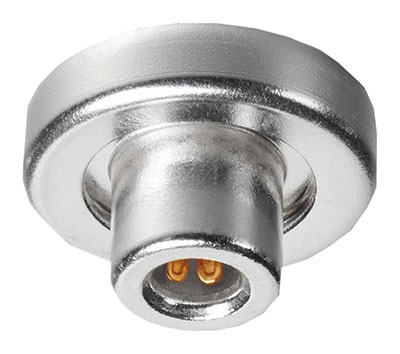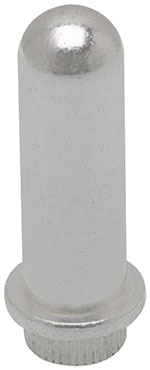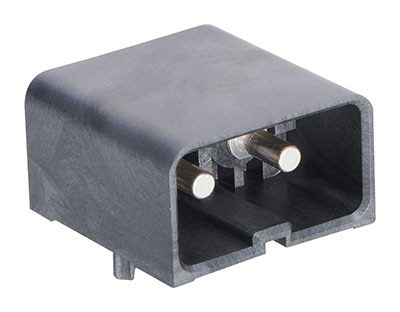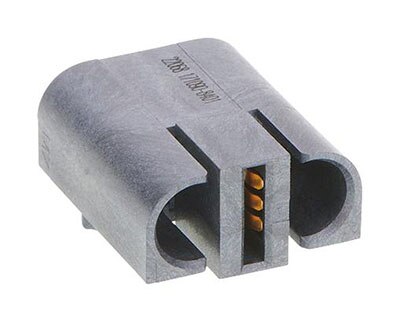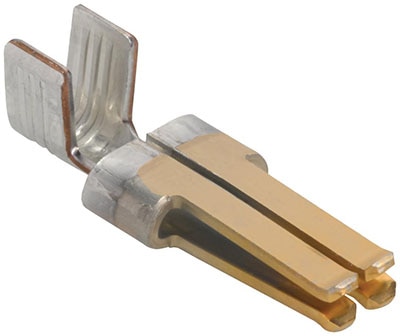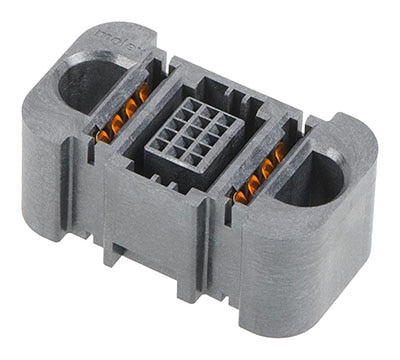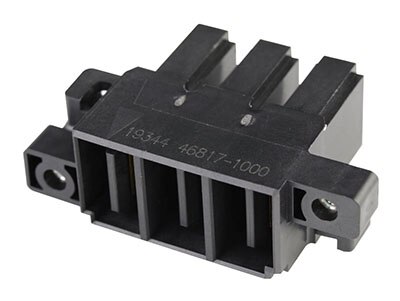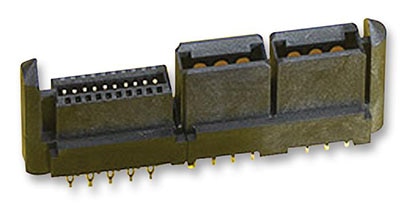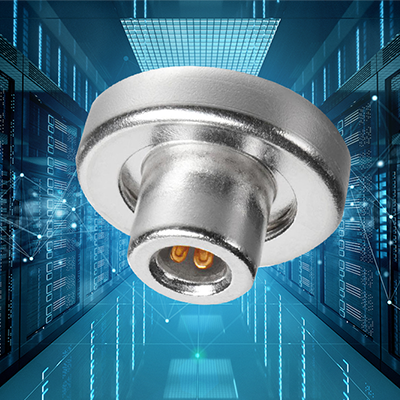 A data center hosts the servers that make up the core infrastructure for an organization’s IT operations. Data centers must continue running even if disruptions occur, making high quality and redundant power a requirement. This Tech Spotlight discusses the basic architecture of power infrastructure in a data center, its necessary components, and the role of connectors in powering a data center.
A data center hosts the servers that make up the core infrastructure for an organization’s IT operations. Data centers must continue running even if disruptions occur, making high quality and redundant power a requirement. This Tech Spotlight discusses the basic architecture of power infrastructure in a data center, its necessary components, and the role of connectors in powering a data center.
What is a Data Center?
A data center is a centralized facility designed to store, manage, process, and disseminate large volumes of data. It serves as the backbone of an organization's IT infrastructure, housing an array of servers, networking equipment, and storage systems. The primary function of a data center is to ensure the availability, security, and reliability of digital information and services. Data centers often employ cutting-edge technologies such as cloud computing, artificial intelligence, and machine learning to efficiently handle diverse workloads.
How are Modern Data Centers Powered?
Powering a modern data center involves stringent requirements to ensure uninterrupted operation. Data centers require a robust and reliable electrical infrastructure with redundant power supplies and backup generators to guard against power outages. Advanced cooling systems are essential to maintain optimal temperature levels and prevent equipment overheating. Additionally, energy efficiency is a key consideration, leading many data centers to adopt green technologies, such as solar or wind power. To meet the escalating power demands of modern computing, data centers must continually evolve their power management strategies, incorporating innovations that balance efficiency, sustainability, and reliability.
The power requirements for a data center depend on its size, capacity, the efficiency of its equipment load, future expansion, and the housed environment. Small data centers spanning 5000 - 20000 square feet with 500 - 2000 servers may require 1 to 5 MW of power. Large ‘hyperscale’ data centers, ranging from 100,000 square feet to several millions of square feet with tens of thousands of servers, may require a power of 20 to over 100 MW. A data center typically relies on the grid as its primary source of electricity. In a power outage, diesel or gas-powered generators and batteries supply the necessary electricity.
Considerations for Power Infrastructure Design in Data Centers
There are several considerations that are crucial when designing the power infrastructure for a data center:
- Scalability: Ideally, the power system must be able to scale seamlessly to support additional load as required. This improves operational efficiency and reduces downtime when upgrades are necessary.
- Backup power sources: Power outages in a data center may lead to significant data loss, hardware damage, and disruptions in operation. Backup power systems such as Uninterruptible Power Supplies (UPS) or generators protect from outages and other power-related issues.
- Power Distribution and Management: Choosing intelligent power distribution units (PDUs) and remote management options provides real-time power usage monitoring, load balancing, and proactive maintenance. PDUs enable efficient distribution and management of power within a data center to improve efficiency and uptime.
- Breaker Coordination and Ground Fault Protection: Breaker coordination stops nuisance tripping and avoids system-wide blackouts, while ground fault relays protect against current leakage anywhere in a branch circuit.
- Redundancy: The critical power infrastructure components within a system are duplicated to ensure uninterrupted power during a power failure or outage. 2N and N+1 are the most popular approaches to redundancy in data centers. 2N refers a mirrored system that is fully redundant. N+1 describes an additional component needed to support a single failure; for example, if four UPS units are required, there should be one extra for backup.
- Integration of renewable energy: Powering data centers using solar and/or wind power reduces energy costs and increases sustainability.
Components of Power Infrastructure in Data Centers
The power infrastructure in a data center typically comprises the following components:
- Power Distribution Unit (PDU): PDUs distribute power from the utility feed to the data center infrastructure, including servers, networking equipment, and other critical components.
- Diesel Generators: Diesel generators are used for longer-term backup power and can run for extended periods in case of prolonged power outages.
- Automatic Transfer Switch (ATS): The ATS automatically switches between the primary utility power and the backup power source when it senses an outage in the primary source.
- Power Conditioning Equipment: Devices such as voltage regulators, isolation transformers, Transient Voltage Surge suppressors, and power filters stabilize and condition incoming power.
- Uninterruptible Power Supply (UPS): UPS systems provide a short-term power backup for a seamless transition to an alternative power source in case of utility power interruptions.
Selecting the best type of UPS depends on the specific requirements of the data center. Three types of UPS systems commonly used in data centers are:
- Offline (Standby) UPS: An offline UPS system comprises a battery charger, a static switch, and an inverter. Under normal mode of operation, the main AC line simultaneously supplies power to the battery bank of the UPS and the load. The inverter is connected in parallel to the load and, during normal operating mode, is left on standby. In a power outage, a static switch will disconnect the load from the power grid, and the battery bank will start supplying power to the load via the inverter.
- Line-Interactive UPS: A line-interactive UPS system consists of a static switch, a bidirectional converter/inverter, and a battery bank. Under normal operating conditions, the load is supplied by the utility grid while the bidirectional converter/inverter charges the battery. Line-Interactive UPS systems include automatic voltage regulation (AVR) to correct minor fluctuations in input voltage.
- Online Double-Conversion (True Online) UPS: An online UPS consists of a rectifier, an inverter, and a static switch. Under normal static conditions, the rectifier charges the batteries. It maintains the constant DC link voltage while the inverter converts the DC link voltage to the required AC to feed the load. During grid failure, the magnetic contactor disconnects the AC line, with the inverter continuing to supply power to the load without interruption. An online UPS is most often recommended for data centers due to its superior power conditioning and seamless transition to battery power.
Power Connectors for Data Centers from Molex
Power Connectors
Shop our wide variety of Power Connectors from Molex.
Don't forget to join our discussion.
To meet the demand caused by the exponential growth of IoT, cloud computing, and wireless communications, a data center’s architecture needs to be flexible, with a power supply infrastructure that is capable of growing in parallel. More processors are being packed into server racks, requiring greater power density than ever before. Power supplies and their connectors must deliver an increasing amount of power per inch of rack space. With the large amount of heat generated by the data center’s equipment, thermal management is critical. High temperatures can have adverse effects on signal integrity, especially in high-speed communications. Connectors destined for data center applications must be designed to provide the greatest efficiency to minimize operating costs and thermal load. Here are some specific examples of where power connectors are used in data centers:
- Server Racks: Power connectors connect PDUs to servers within server racks.
- Storage Devices: Power connectors are used to connect storage devices, such as SAN (Storage Area Network) arrays and NAS (Network Attached Storage) devices, to the power supply. These devices require a reliable and consistent supply of power to maintain data integrity and availability.
- Networking Equipment: Networking equipment, such as switches, routers, and firewalls, is connected to the power supply via power connectors.
- Cooling Systems: Power connectors are used to connect cooling systems, such as fans, pumps, and chillers, to the power supply.
- UPS Systems: Power connectors connect UPS systems to the power supply and to the data center equipment they protect.
Molex offers a wide range of power connectors designed specifically for data center applications, ensuring reliable and efficient power distribution for critical data center equipment.
Sentrality High-Current Pin and Socket Interconnects provide up to 1 mm of radial self-alignment capability, facilitating the alignment of sockets and pins when mating parallel PCBs or busbars. Sentrality connectors can handle currents up to 350A and have a maximum contact resistance of 0.4 mΩ, significantly reducing energy loss.
PowerWize BMI blind-mating panel-to-board / panel-to-busbar connectors incorporate Molex’s COEUR socket technology and have multiple contact beams to create a large contact surface at the contact interface, resulting in negligible contact resistance. The voltage drop across the contact interface is extremely low, with minimal heat generation. PowerWize BMI connectors are designed for blind-mating situations to ensure accurate mating in hard-to-reach and visually obscured spaces.
EXTreme Ten60Power Connectors are hybrid power and signal solutions that provide up to 260.0A per linear inch. Their high current density and low power loss make them well-suited for use in rack servers and power supplies. EXTreme Ten60Power connectors have a low-profile 10mm housing, which helps with airflow. Their multiple blade styles facilitate blind-mating and enable high-voltage solutions for backplane and midplane designs.
Molex’s EXTreme Guardian HD Power Connectors offer a configurable hybrid power/signal solution with a high current density of 130A per blade. They support AC or DC high-voltage applications and have a reduced PCB footprint when compared to legacy power products.
Molex EXTreme Low-Profile Hybrid (LPH) Power Connectors are designed with power blades parallel to the PC board and have a height of just 7.5mm. Their design allows greater system airflow while taking up 53% less space than traditional connectors with the same current rating.
Summing Up: Power Infrastructure in Data Centers
Power infrastructure in data centers encompasses the systems and technologies designed to provide electrical power to support the uninterrupted operation of critical IT equipment. This infrastructure includes elements such as UPS units, PDUs, generators, and backup systems to ensure continuous power availability. Efficient power infrastructure design is important for optimizing energy consumption, reducing environmental impact, and enhancing the overall sustainability of data center operations. Molex provides a variety of reliable and durable connectors that help optimize the operation of the modern data center.
About the Sponsor
Molex is a leading one-source supplier of interconnect products. Our team of highly skilled experts is focused on the design, development and distribution of innovative product solutions that touch virtually every walk of life. Our portfolio is among the world's most extensive, with over 100,000 reliable connector products, including everything from electronic, electrical and fiber optic interconnects to switches and application tooling.


